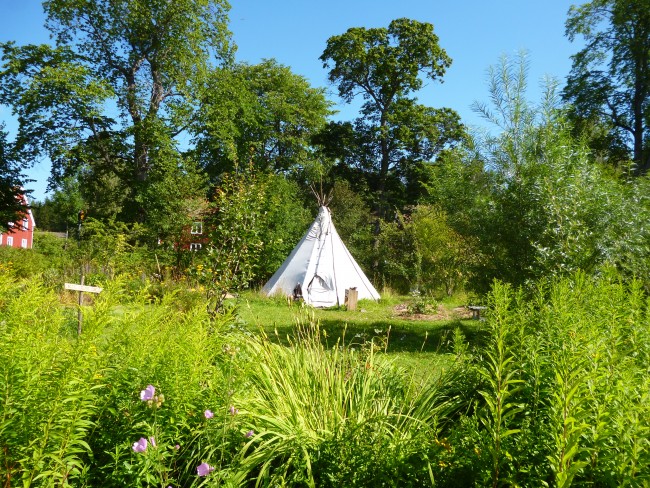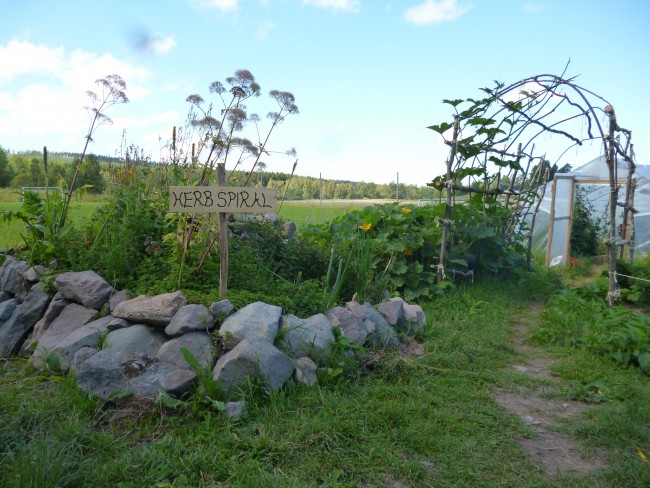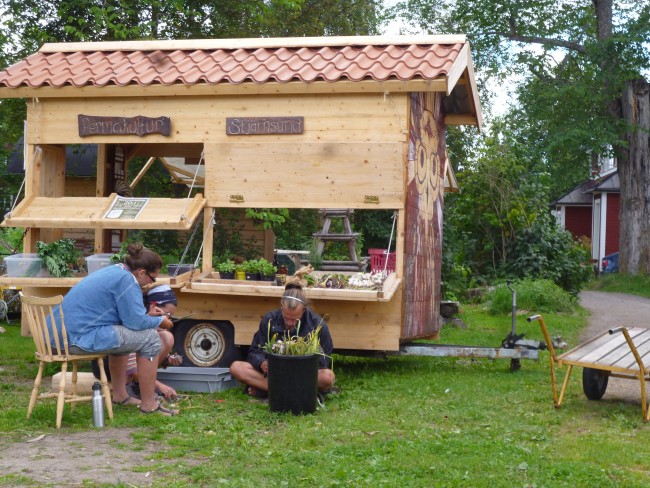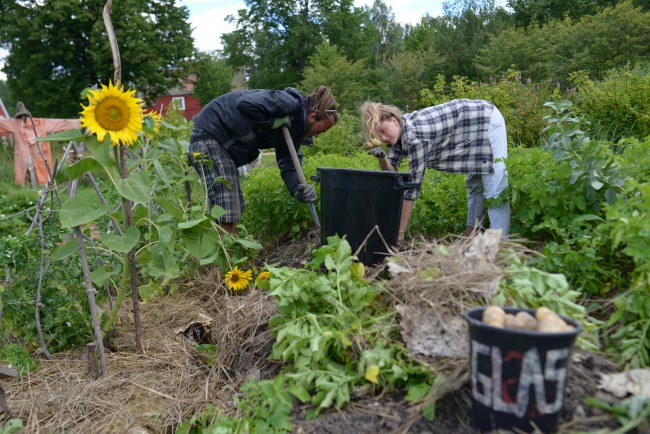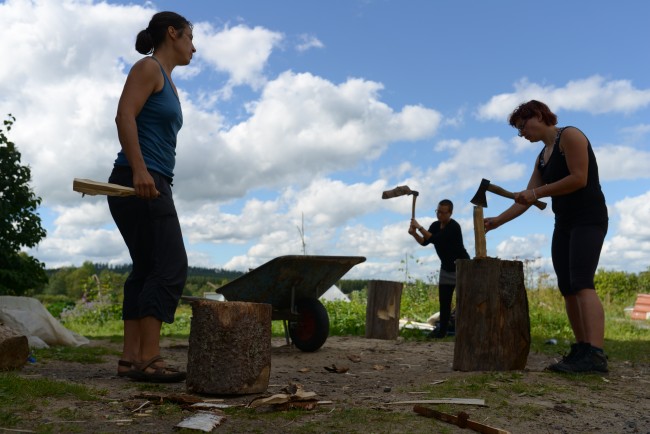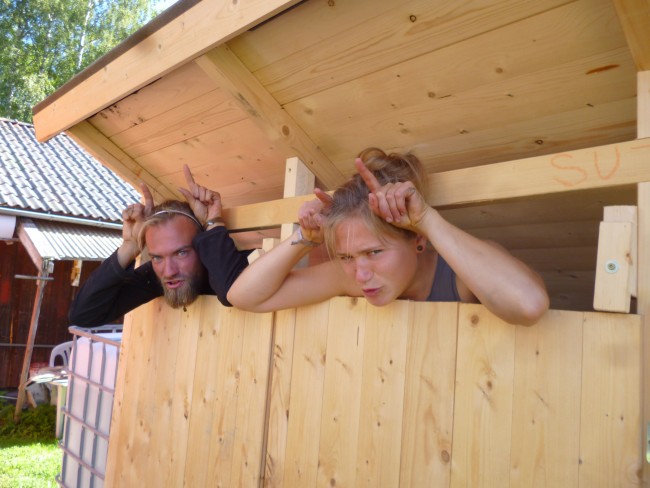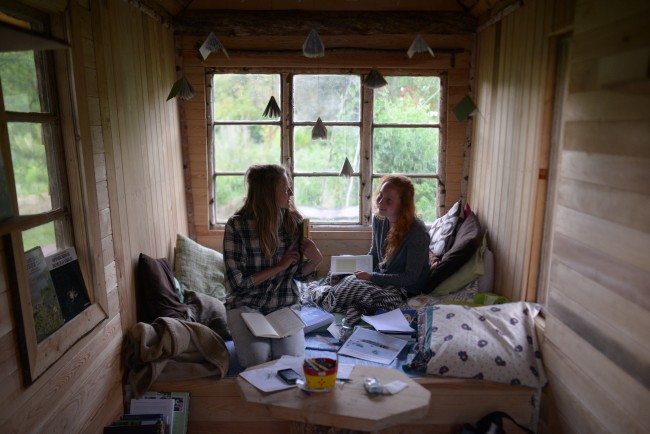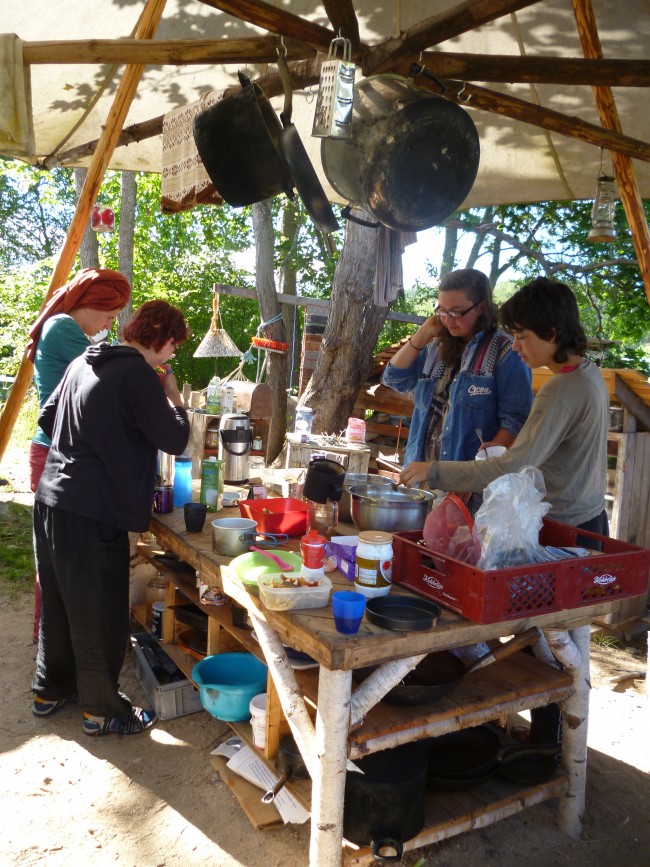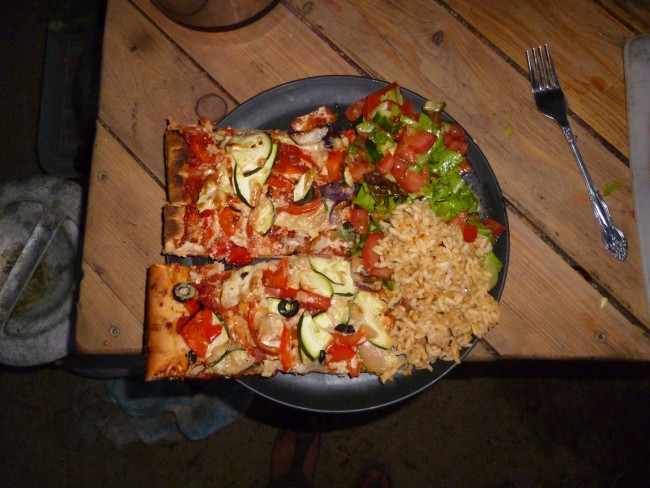Stjärnsund (pronounce: Shairnsoond) is a small village of about 430 inhabitants somewhere half-way between Oslo and Stockholm. The Biketour stayed there for two nights in the middle of August.
Originally an industrial village that started to slowly be abandoned because of people moving to the cities, a lot of Hippies moved there during the 70s and started to live in communes. As part of their spiritual connection with the earth, they started growing vegetables, and over time, people also joined their communities who were not interested in their spirituality but only in the gardening.
Today, many of the old Hippies and their now grown-up children still live in the village, and it has become a place with many cultural activities known everywhere in the region. In 2013, the Permakultur Stjärnsund network was created to do some more gardening again in the village, and they were the ones who invited us to camp on their lawn.
It felt like there was a good feeling of community with lots of active and welcoming people around. The Nordic Permaculture Festival had happened shortly before we arrived, but we decided not to join it because of the high admission fee. There are permaculture courses happening throughout the year.
In return for the hospitality of our hosts, we helped harvesting some of the vegetables, to clean some of the harvest in order for them to be sold, and to chop the wood for the giant rocket-stove in the volunteer outdoor kitchen.
Last year, we had visited a lot of permaculture projects in Greece, and their amazing concept was to plant the vegetables in a way that creates a self-sustainable eco-system, so the vegetables would grow by themselves, without any weeding, irrigation or digging necessary. In Scandinavia, none of the projects so far seemed to use this way of doing agriculture, so I was quite interested to find out how permaculture can be done in this climate and what are the reasons for so few people to do it. It seems like Permakultur Stjärnsund understands permaculture more as a way to live as a gardening community in a (socially) sustainable way, and not so much as a method of growing vegetables. The growing is done in a quite traditional way, planting one type of plant per bed and weeding it throughout the year until it is harvested.






